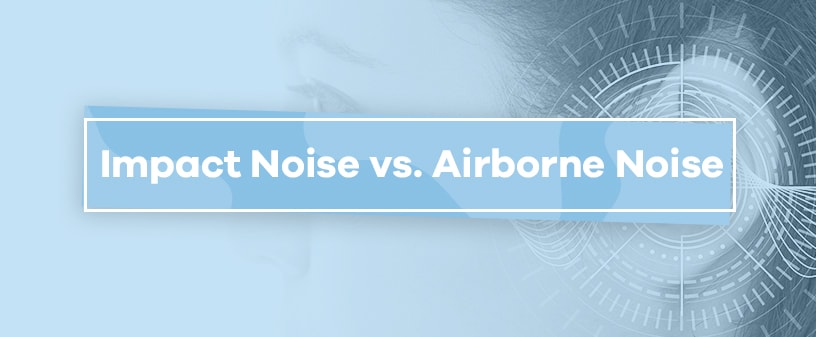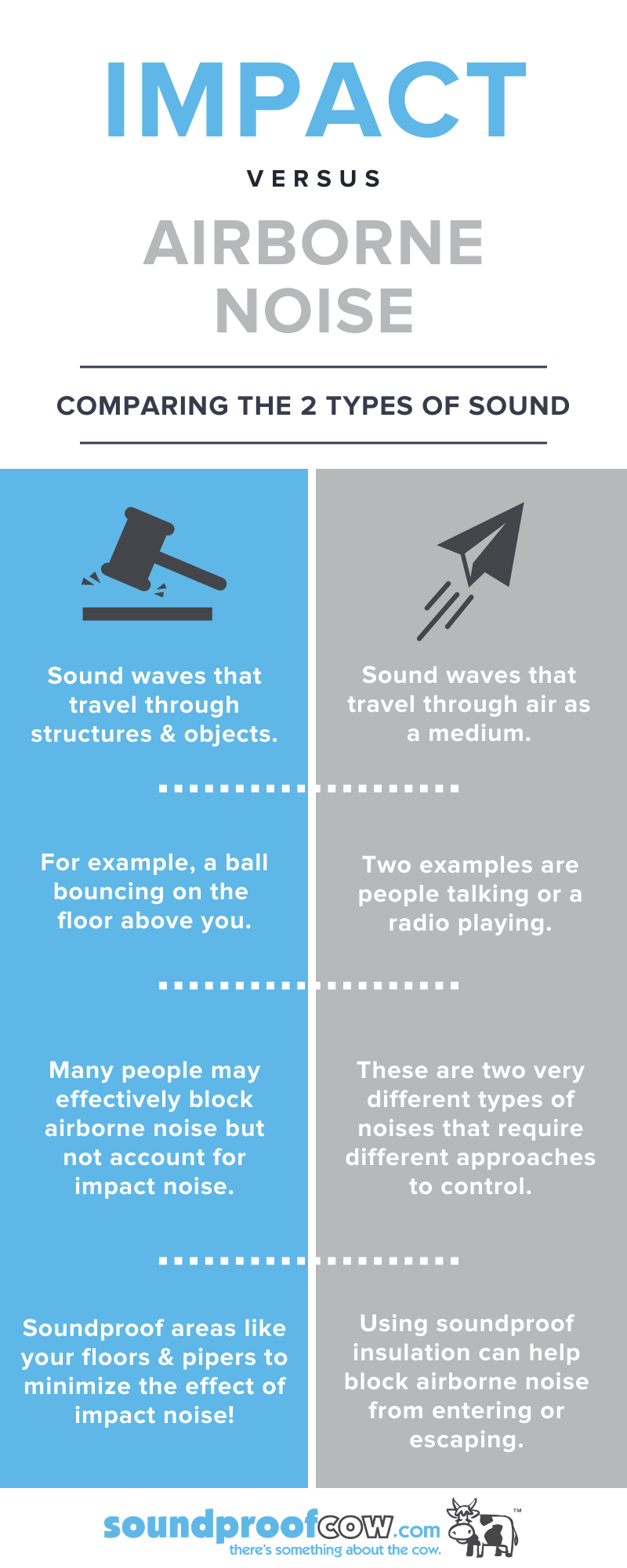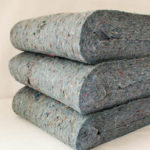
All sound is a result of waves that cause vibrations that reach the ear or a recording device after traveling through a given medium, but many people who are concerned about acoustics often do not take the time to distinguish between impact noise vs. airborne noise. These are two very different types of noises that require different approaches to control. What do these terms mean, and how do we control impact noise vs. airborne noise?
What Is Airborne Noise?
Airborne noise is when a sound is transmitted by air, examples include music, speech, and television. This type of noise is fairly common, so it’s typically what comes to mind when you think of noise.
What Is Impact Noise?
Impact noise is when the vibration of a sound travels through a medium other than the air and occurs when two or more objects collide. Examples of impact noise include a construction jackhammer, a ball bouncing on the floor above you or water sloshing through your pipes. Impact noise can travel through structures, and so it is sometimes called structure-borne noise.
How Do You Control Airborne Noise and Impact Noise?
If you only control one type of noise in a room, your room is not fully soundproofed. Many people may effectively block airborne noise but not account for impact noise. This may not be sufficient for situations where structures are especially prone to conduct sound or where outside impacts are common.
Fortunately, Soundproof Cow designs a number of products that can block both impact noise and airborne noise. For example, the Quiet Batt® 30 Cotton Insulation has a powerful barrier to block airborne noise from entering or escaping, as well as sound absorption insulation to reduce vibrations and echoes.
The result is a more complete soundproofing experience that makes any room appropriate for everything from a child’s nursery to a recording studio. This product also has the advantage of being constructed with 80 percent recycled cotton, making it easy to handle and safer to have on the walls of your home.
Soundproof Cow has ways to control impact noise from your floor and your pipes as well. If you’d like more information about how our products can safely block both airborne noise and impact noise, or if you are interested in ordering soundproofing products for your home or business, contact us today.
Learn More About Understanding Sound
What is Reverberation of Sound
How to Determine the STC Rating of a Wall








